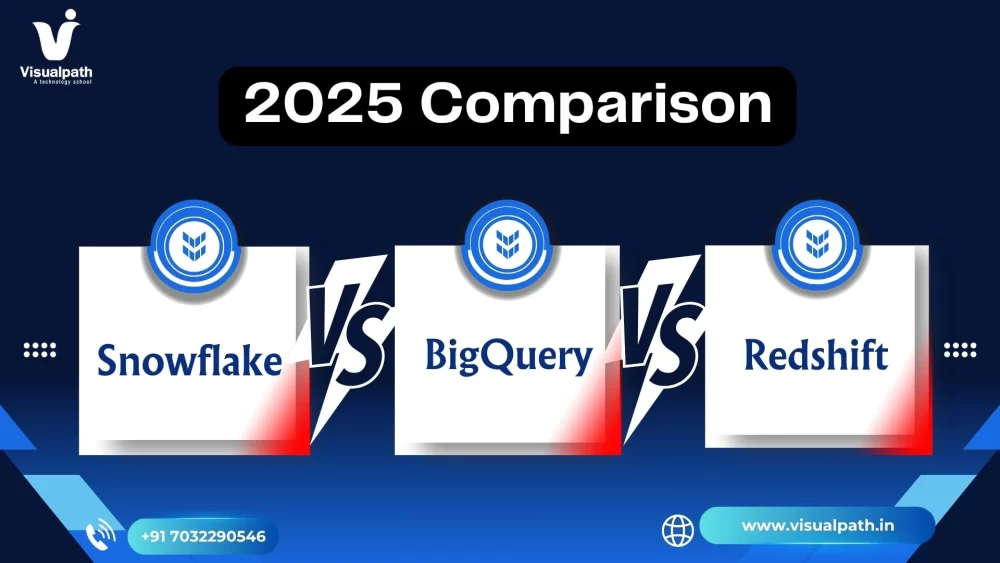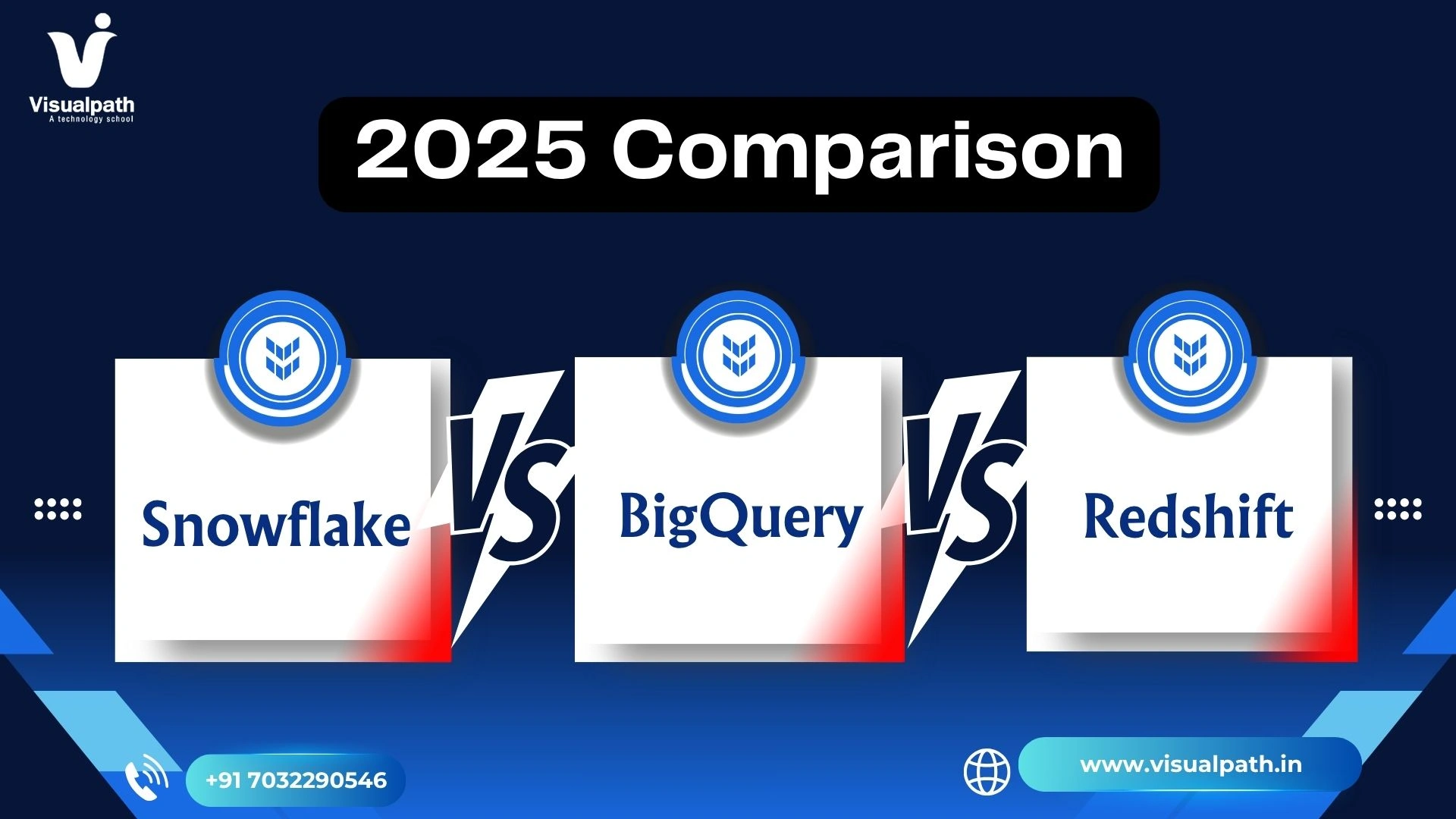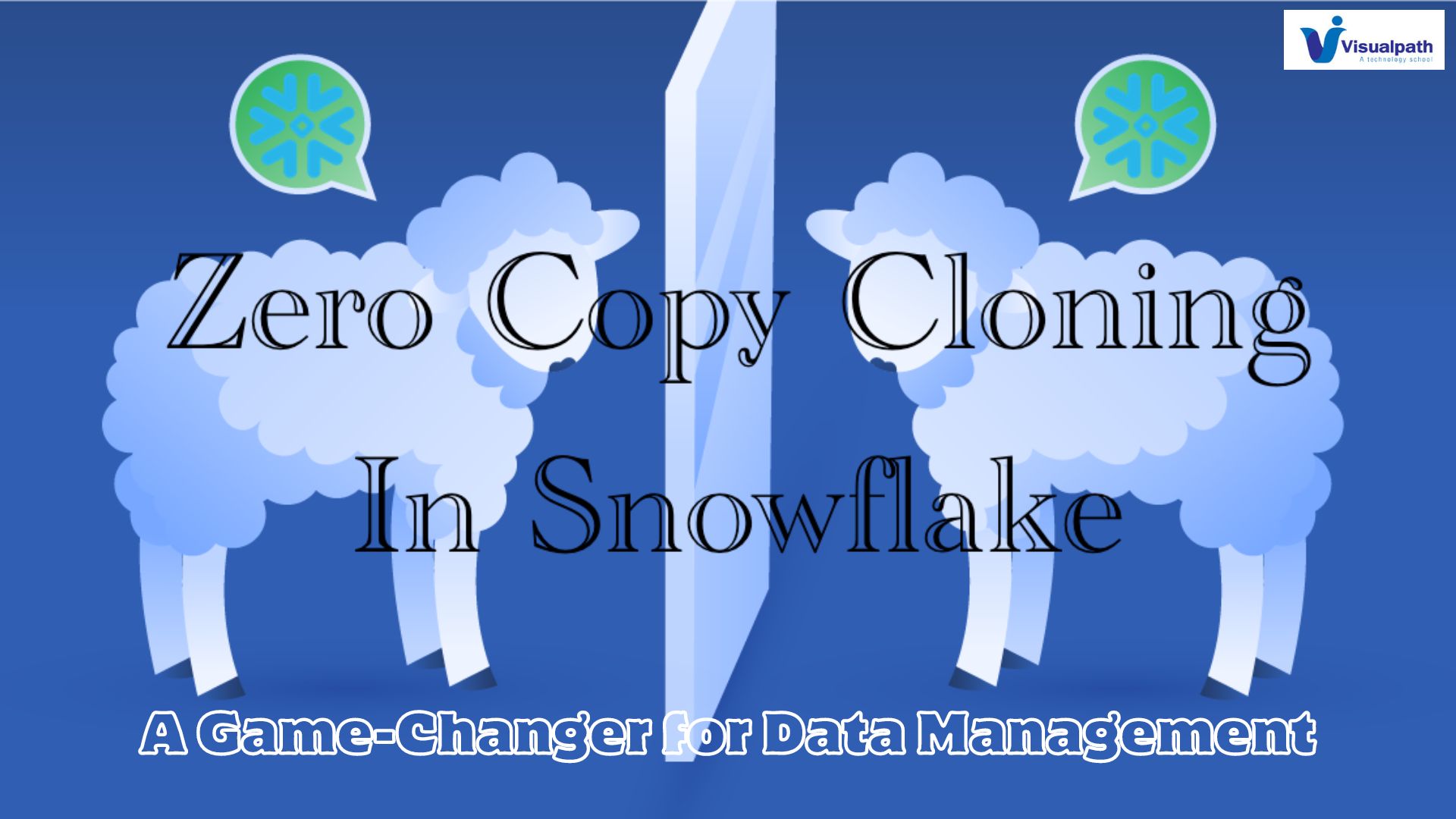
Introduction to Modern Data Warehousing
Snowflake vs BigQuery vs Redshift continues to be a hot topic in 2025. Organizations now generate more data than ever. Choosing the right cloud data warehouse is critical. Each platform has evolved rapidly to meet growing data demands. The race for performance and scalability is tighter than ever.
Over the last year, AI integration and hybrid cloud support reshaped user expectations. In Q1 2025, all three vendors rolled out significant enhancements. These included better cost management, machine learning capabilities, and cross-cloud flexibility. Understanding these changes is key to making smarter decisions snowflake course.
Architecture and Storage Model
Snowflake vs BigQuery vs Redshift differ significantly in design. Snowflake still leads with its multi-cluster shared data architecture. This model ensures seamless scalability without resource contention. Snowflake separates storage and compute, making scaling efficient and fast.
BigQuery uses a serverless architecture. It handles infrastructure management on Google Cloud. In January 2025, BigQuery added dynamic compute autoscaling. This ensures queries run faster under high loads without manual tweaks.
Redshift, an AWS service, continues to evolve. In April 2025, AWS launched Redshift Serverless Gen2. It uses a fine-grained compute model. This reduces idle costs and improves query concurrency. Snowflake vs Big Query vs Redshift While stores data in columnar format like its rivals, it now supports open table formats such as Apache Iceberg.
Performance and Query Optimization
Performance is crucial in Snowflake vs BigQuery vs Redshift comparisons. Snowflake’s query engine, Polaris, got a boost in March 2025. The new Polaris AI Query Advisor analyzes patterns. It then recommends performance tweaks automatically.
BigQuery’s query acceleration service got smarter in 2025. The new Vega engine reduces latency by 30%. Released in February, it combines GPU acceleration and in-memory caching.
Redshift also stepped up with AQUA 2.0 in early 2025. AQUA now supports broader workloads and leverages ML-based caching. This update reduced query time on benchmark tests by 25%.
All three platforms now use AI for query tuning. However, Snowflake and BigQuery have better automation. Redshift still needs more manual adjustments in complex joins and large datasets Snowflake Training.
Pricing and Cost Control Features
Pricing remains a deciding factor in Snowflake vs BigQuery vs Redshift. Snowflake uses on-demand pricing based on compute time. Their new Cost Guard tool, launched in May 2025, alerts users before they overspend. It also provides smart query cost forecasts.
BigQuery follows a pay-per-query model. This is ideal for sporadic use. In March 2025, Google added tiered pricing plans. Now teams can pick flat-rate or hybrid options based on workloads.
Redshift offers both provisioned and serverless billing. AWS introduced BudgetSync in April 2025. It integrates with Cost Explorer and pauses idle compute resources. Redshift is now more transparent with daily spend limits and usage dashboards.
Comparing all, Snowflake suits enterprises with constant demand. Snowflake vs Big Query vs Redshift fits teams needing quick insights. Redshift offers the best value if you use other AWS services.
Ecosystem and Integration
In the Snowflake course vs BigQuery vs Redshift debate, integrations matter. Snowflake expanded its Native App Framework in May 2025. Now, developers can build and share secure apps directly within Snowflake. This opens doors to better collaboration.
BigQuery integrates deeply with Google AI and Vertex AI. The 2025 release added direct training and inference from BigQuery itself. You can now run ML models without moving data.
Redshift has strengthened its ties with SageMaker. In Q2 2025, Amazon introduced unified ML pipelines. Redshift users can now trigger model training from SQL queries. This makes Redshift more ML-ready than before.
In terms of data sharing, Snowflake’s Marketplace grew by 80% in one year. It now supports paid apps and Snowflake vs Big Query vs Redshift real-time data feeds. Google’s Analytics Hub competes closely but lacks the same scale. Redshift Data Exchange is still in beta.
Security and Compliance in 2025
Security updates were a major theme this year. Snowflake added zero trust features in April 2025. These include dynamic access policies and integration with Okta Advanced Server Access.
BigQuery adopted Confidential Space enhancements in March. This ensures sensitive data stays encrypted during compute. It is now GDPR and HIPAA certified globally.
Redshift implemented role-based auditing in May 2025. You can now log actions at the column level. Combined with AWS GuardDuty, Redshift improved its threat detection capabilities.
All three platforms now support data masking, row-level access, and audit trails. Snowflake still provides the most granular access control. BigQuery leads in AI-based anomaly detection. Redshift benefits from broader AWS security tools.
Final Thoughts: Choosing the Right One
Snowflake vs BigQuery vs Redshift will remain a top debate in cloud analytics. Each has clear strengths. Snowflake shines in scalability and cross-cloud support. BigQuery offers unmatched serverless speed and ML integration. Redshift brings value to AWS-heavy environments.
In 2025, the decision depends on your ecosystem, team size, and data strategy. If real-time AI is your goal, BigQuery fits well and if you value unified data access across platforms, Snowflake is ideal. If you are deep in AWS, Redshift now delivers faster and smarter results.
Stay tuned, as all three are evolving fast. Expect more AI features and tighter cloud-native integrations in the coming months.
Trending Courses: Dynamics 365 Supply Chain Management, Sailpoint Identityiq, Microsoft Dynamics Ax technical
Visualpath is the Leading and Best Institute for learning in Hyderabad. We provide Snowflake Online Training. You will get the best course at an affordable cost.
For more Details Contact +91 7032290546




